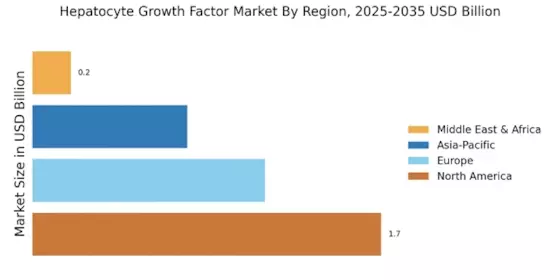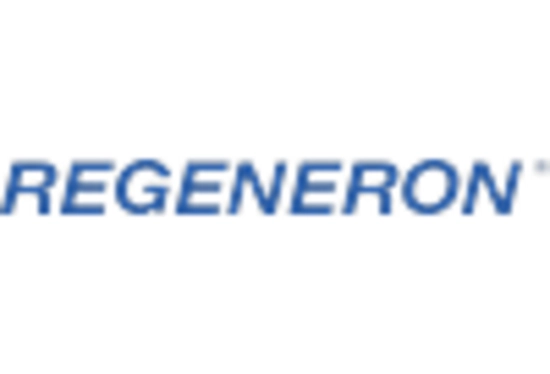Advancements in Biotechnology
Technological advancements in biotechnology are significantly influencing the Hepatocyte Growth Factor Market. Innovations in genetic engineering and cell culture techniques have enhanced the production and application of HGF. These advancements facilitate the development of more effective and targeted therapies, which are crucial for treating liver diseases. The market is witnessing a surge in biopharmaceutical companies focusing on HGF-based products, driven by the potential for improved patient outcomes. Furthermore, the integration of advanced analytical methods in research is likely to yield deeper insights into HGF's mechanisms, thereby enhancing its therapeutic applications. As a result, the Hepatocyte Growth Factor Market is poised for growth, with biotechnology playing a pivotal role in shaping its future.
Regulatory Support for Biologics
Regulatory support for biologics is emerging as a significant driver for the Hepatocyte Growth Factor Market. Regulatory agencies are increasingly recognizing the therapeutic potential of biologics, including HGF, leading to streamlined approval processes. This supportive environment encourages pharmaceutical companies to invest in the development of HGF-based therapies. The potential for expedited pathways and incentives for biologics is likely to enhance the market's attractiveness. As regulatory frameworks evolve to accommodate innovative treatments, the Hepatocyte Growth Factor Market stands to benefit from increased product availability and accessibility. This trend may also foster collaboration between regulatory bodies and industry stakeholders, further propelling advancements in HGF research and application.
Rising Awareness of Liver Health
The growing awareness of liver health among the general population is a notable driver for the Hepatocyte Growth Factor Market. Educational campaigns and health initiatives are emphasizing the importance of liver function and the impact of liver diseases. As individuals become more informed about liver health, there is a corresponding increase in demand for effective treatments, including those utilizing HGF. This heightened awareness is likely to influence patient behavior, leading to earlier diagnosis and treatment of liver conditions. Consequently, the Hepatocyte Growth Factor Market may experience growth as healthcare providers respond to the increasing demand for innovative therapies. The focus on preventive care and early intervention is expected to shape the future landscape of liver disease management.
Increasing Prevalence of Liver Diseases
The rising incidence of liver diseases, including hepatitis and cirrhosis, is a primary driver for the Hepatocyte Growth Factor Market. As liver-related ailments become more prevalent, the demand for effective therapeutic solutions escalates. Hepatocyte Growth Factor Market (HGF) has shown promise in promoting liver regeneration and repair, making it a focal point in treatment strategies. According to recent estimates, liver diseases affect millions, leading to a significant burden on healthcare systems. This trend is likely to propel research and development efforts aimed at harnessing HGF's potential, thereby expanding its market presence. The increasing focus on liver health and the need for innovative therapies are expected to drive investments in the Hepatocyte Growth Factor Market, fostering advancements in treatment modalities.
Growing Investment in Research and Development
Investment in research and development (R&D) is a critical driver for the Hepatocyte Growth Factor Market. Pharmaceutical companies and research institutions are increasingly allocating resources to explore the therapeutic potential of HGF. This trend is fueled by the recognition of HGF's role in liver regeneration and its implications for treating various liver diseases. Recent data indicates that R&D spending in the biopharmaceutical sector has seen a substantial increase, reflecting a commitment to innovation. As more studies emerge demonstrating the efficacy of HGF in clinical settings, the market is likely to attract further investment. This influx of funding is expected to accelerate the development of HGF-based therapies, thereby enhancing the overall landscape of the Hepatocyte Growth Factor Market.


















Leave a Comment